By Rod Carlson
Standing on an ugly carbuncle of volcanic rock 500 feet above the Pacific Ocean, the Associated Press photographer swung a cumbersome news camera toward six men holding a pipe with a flag tied to it and pressed the shutter release. At that instant, all he knew was that combat photography was always a matter of luck and, with the hundreds of Marines already dead, it would take more than his share of it to get off Iwo Jima alive.
More surprising than Joe Rosenthal’s own survival would be the success of the photograph he had just taken. Eventually, it would appear on stamps, posters, and in magazines and newspapers. Rosenthal’s photograph of the flag raising on Mount Suribachi would sell billions of dollars in war bonds and serve as the basis for the Marine Corps War Memorial overlooking the nation’s capital.
Among the Americans who cheered the flag raising as a sign of impending victory was the crew of an LST (landing ship tank) nervously awaiting orders to land on the beach almost at the base of Suribachi. Like Rosenthal, they would need a lot of luck to survive. Luck and the determination expected from the Coast Guard even though this crew never thought they would end up at a place like Iwo Jima. For a nation of civilians, the iconic image of the flag raising serves as a symbol of the country’s unity, sacrifice, and triumph. But for men of LST 792, it would be insignificant compared to the images soon to be permanently embedded in their individual memories.
LST: “Large, Slow Target”
For one of the crew, Nick Caiazzo, the war started in New York City. He had grown up on the streets of East Harlem. He was tough and smart enough to know he couldn’t escape the draft. He knew if he waited he would be just another neighborhood kid sent off to fight in World War II. So, being a good swimmer and preferring water to Army mud, he decided to volunteer for the Navy only to be told that they had no use for 16-year-old kids. A few days later, Nick Caiazzo read in the newspaper that one service had openings for his age group and, with the stroke of a pen, he joined the United States Coast Guard. A colorful recruiting poster showing a sleek patrol boat skimming across a sparkling sea was all it took for him to volunteer for sea duty.
But recruiting posters do not provide the whole picture. World War II in the Pacific was an amphibious war, and the U.S. War Department needed crews for ships that could sail great distances and offload entire divisions into battle. Much of the responsibility for manning these new LSTs, which some veterans asserted stood for “large, slow target,” fell to the Coast Guard.
Although Pittsburgh might sound like an unlikely place to start an overseas tour, it was where Seaman Caiazzo and his shipmates first went aboard their new LST. Constructed from keel to topmast in about 12 weeks, LST 792 was over a city block long and 50 feet wide, with a crew of about 115 officers and enlisted men. She could travel at around 12 miles per hour, and with bow doors that swung open, its cargo of 2,100 tons of trucks and tanks could drive onto the beach and straight into combat.
The LST did not look like a typical ship, but more like an overgrown skiff with a house above its stern. Some of the Coast Guardsmen had wanted destroyer duty and grumbled that the LST was nothing more than a floating garage. But the few who had ridden LSTs into battle knew they could count on them in combat conditions.
From the shipyard, LST 792 sailed down the Ohio to the Mississippi River and then into the Gulf of Mexico to practice beach landings, gunnery, navigation, and using the ship’s complex equipment including radar and the powerful davits for raising and lowering their two landing craft. They stopped near New Orleans to take on supplies and continued to Panama, through the Panama Canal, and on December 3, 1944, after a final stop in San Diego for replenishment and for farewell phone calls to loved ones, LST 792 joined a convoy headed west across the Pacific Ocean.
Standing on the fantail above the churning propellers, Caiazzo watched California grow smaller and finally disappear below the horizon. He wondered when they would come home again. Would they come home again? Every member of the crew knew neighbors, friends, or family members already killed in Europe, Africa, and the Pacific. Caiazzo wondered if each of the fallen had watched America vanish the way he had. He wondered if they suspected they might be seeing America for the last time.
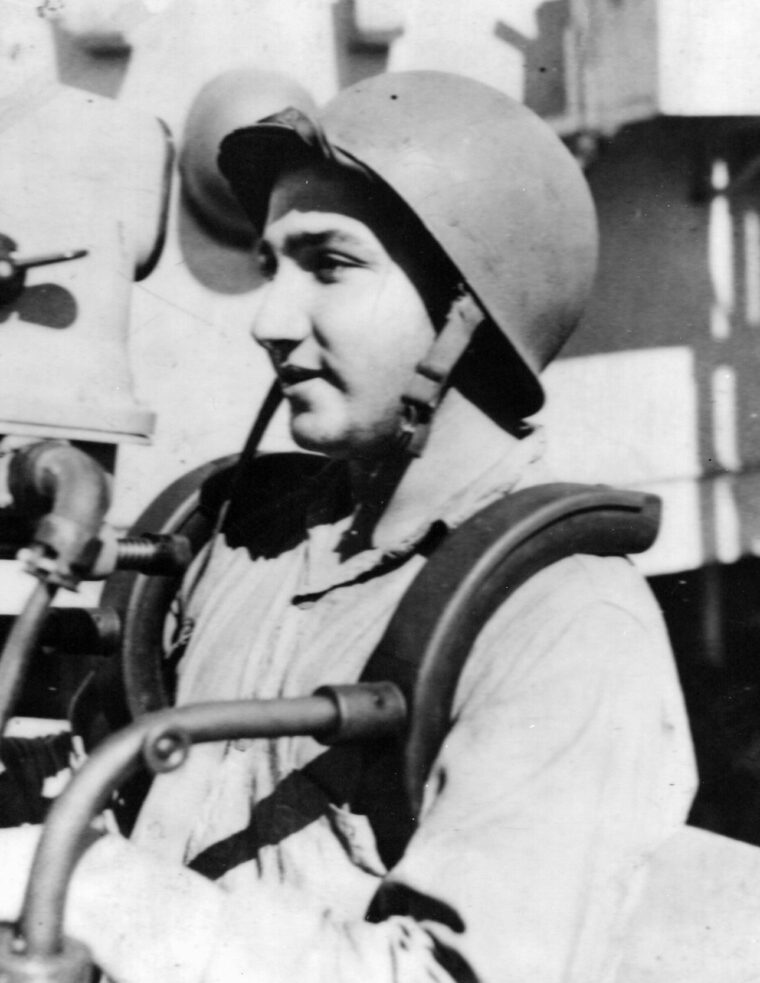
Caiazzo felt no sadness leaving home and making the transition to military life. There was a new feeling that was not loneliness or any kind of homesickness but more of a feeling of being separated, of being alone at the end of a diving board. His introspection was cut short when a petty officer barked to Caiazzo and the others who had gathered at the fantail to go back to work. There was always plenty of work and no shortage of enthusiasm. Somewhere in the distance, there was a war and this crew was more than ready to do its part.
A Bad Omen For LST 792
After 10 days at sea, LST 792 entered Pearl Harbor. Now the crewmen were seeing firsthand what they had seen in movie theaters in countless newsreels: Hickam Airfield, Ford Island Naval Air Station, and Battleship Row with the sunken USS Arizona, all victims of Japanese treachery four years earlier. But now the scene was different. Any battle damage that had not been repaired was obscured by a continued blur of activity. The shipyards were full of ships being repaired and refitted with updated equipment. The wharfs were thronged with ships being unloaded and filled with cargo destined for innumerable ports scattered around the Pacific. It was obvious that everything and everyone going to war was going through Pearl. It was an awesome spectacle of economic and military power. It would have been impossible for the crew of LST 792, or any crew, not to be excited to be part of it.
While on still another training operation in Hawaiian waters, LST 792 had been “volunteered” as a target for Navy fighter pilots who needed strafing practice. In addition to their usual complement of machine guns, each aircraft had been equipped with a camera that would capture each strafing run on film and gauge the pilot’s marksmanship.
When one of the pilots squeezed this trigger, thinking he was going to activate the camera, a burst of .50-caliber bullets slammed into the ship’s main deck. Metal fragments flew like shrapnel, and sailors were hit. Even though the physical wounds were superficial, for Caiazzo and everyone else the incident was troubling. Was this what war was all about—sudden, unpredictable violence with no warning and no means of preventing it or countering its destructive power? They had not even left Hawaii and it was not even an enemy aircraft, and still they were almost killed. What would it be like out there where their enemy would purposely try to kill them? The crew accepted the Navy’s apology but seemed to regard the incident more as an omen than an accident.
If the size of a ship is measured by the load it can carry, the stevedores loading LST 792 thought it was several times larger than anyone else did. On the main deck, they wedged 37 trucks and trailers, and one deck below on the tank deck were 48 bulldozers, cranes, trucks, and trailers plus 342 passengers—soldiers, Marines, sailors, and Navy construction battalion personnel.
One of the stevedores told Caiazzo that LST 792 was bound for a very bad place. Caiazzo had already learned that the only reliable information was scuttlebutt, so he believed what the dockworker told him and was not surprised when the crew was informed that they were bound for Iwo Jima. Word of their destination was echoed by Tokyo Rose, the Japanese radio personality who beamed propaganda at Americans in the Pacific. She proudly announced that the crew’s reception at Iwo Jima would be far worse than the ones dished out at Tarawa, Saipan, or any previous battle. For added credibility, she addressed the ship’s captain and several officers by their actual names and ranks.
The strafing incident in Hawaii and Tokyo Rose’s personal message to LST 792 led the crew to consider the possibility that they might be headed for trouble. Officially now in enemy waters, everyone was alert. Everyone soon lost track of the number of times the ship went to general quarters.
Journey to Iwo Jima
The last stop before the war would begin for LST 792 was the island of Saipan to take on supplies and conduct a dress rehearsal for the coming invasion of Iwo Jima. Although the fighting on Saipan was over, Japanese soldiers continued to occupy some of the island’s innumerable caves. Unwilling to surrender, Japanese soldiers would sometimes launch mass suicide attacks. One of these had taken place the previous night, and the attackers had been slaughtered by Marine machine gunners. Now, the crew of LST 792 watched a work party using a bulldozer to bury them in a mass grave.
Like everyone else on board, Caiazzo hated the Japanese for their treachery and was glad to see them dead. For a moment he wondered what his mother or his parish priest would say about his own lack of sympathy, but thought better of it. The civilians were in New York and knew nothing about what it took to beat the Japanese. On February 15, 1945, LST 792 joined a convoy headed some 700 miles due north to the volcanic island of Iwo Jima.
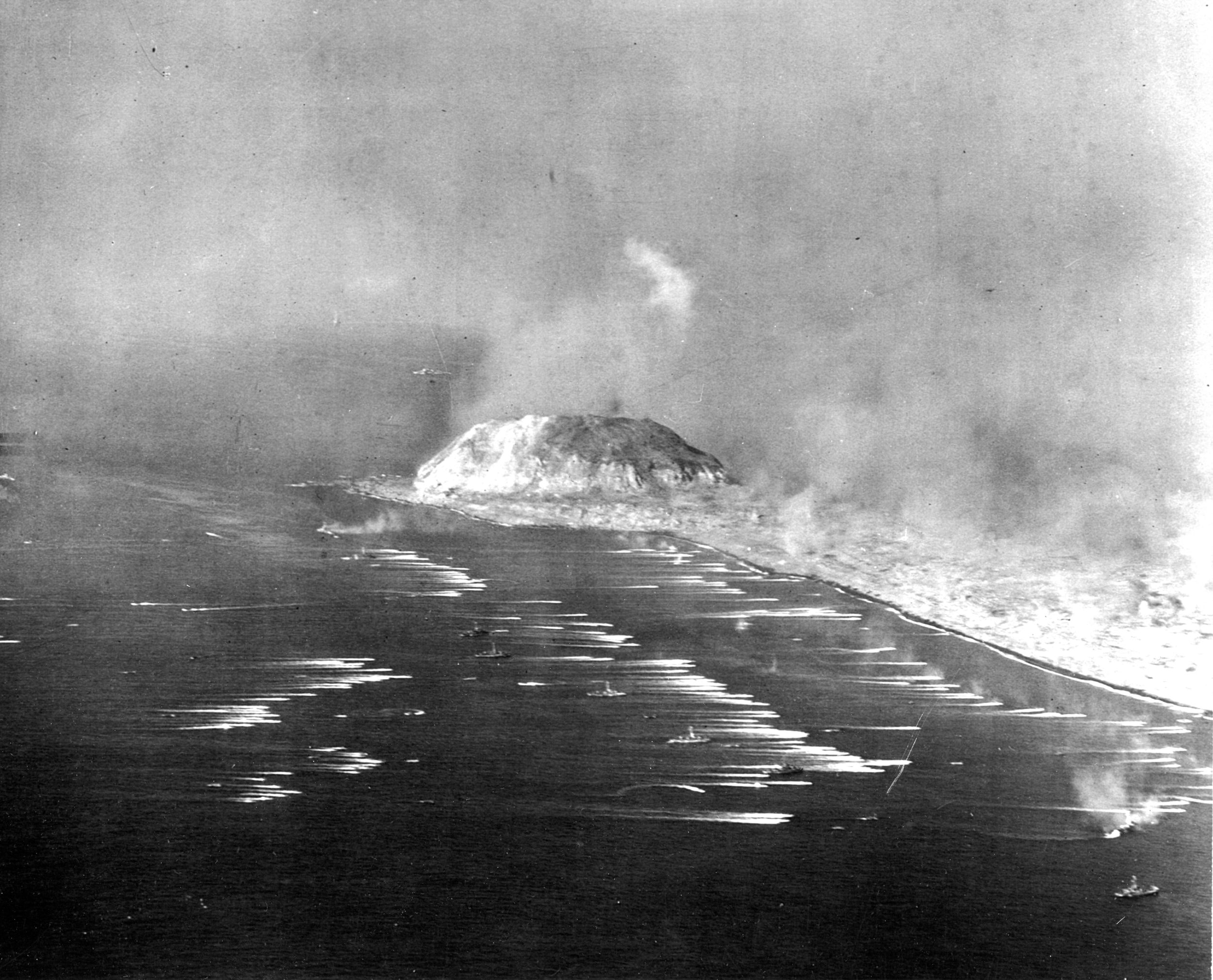
Just after 2 am, Lieutenant (j.g.) Tom Pennock methodically patrolled the perimeter of the deck. He tugged on tie-downs and pushed against crates to make sure everything was secure. Then he went through the hatch to the darkened wardroom and sat down with a cup of cold coffee. His next conscious act was lifting his head from the dining table enough to see the luminous hands of his watch. It was just past 4 am. Pennock walked out onto the deck to make sure nothing had gone haywire while he was asleep and found the sea of cargo between the after superstructure where he stood and the forward gun tubs to be unchanged.
The damp breeze felt almost cold as he looked over the side at the ocean swirling past the hull. He could hear the drone of the engines and feel the rhythm of the propellers doggedly screwing through the ocean and driving the ship forward. War or no war, every time Pennock was on the deck at night he knew that if someone came along they would ask what he was so happy about because he knew he was smiling. The reasons were either complex and inexplicable or as simple as being a natural at everything the job called for.
While others used their bunks for what the U.S. Bureau of Ships had intended, Pennock, a career Coast Guardsman, used his bunk only as a place to sit while tying his shoes after a shower and a change of clothes. Usually he slept sitting in a chair or on the deck leaning against a crate and only for a half hour or so at a time. A few hundred yards to starboard, appearing more of a shadow than an object, a destroyer, moving at twice the speed of LST 792, raced toward the front of the convoy. Guided only by radar, it made precise circles around the convoy like a loyal sheepdog minding the flock.
After a while, Pennock began to make out soft flashes of light on the horizon, and he knew that the Navy’s big guns were bombarding Japanese positions on Iwo Jima. It was February 19, 1945, and the official prediction was that in three days, 10 at the very most, the island would be secure and the Marines would be moving on to the next invasion on the home stretch to total victory. In spite of the official optimism, all who were about to put their lives on the line were justifiably nervous, except Pennock. His philosophy was that whatever was going to happen would happen and he would take things in stride.
An Introduction to Battle
By sunrise, LST 792 was close enough to Iwo Jima to watch battleships, cruisers, and destroyers firing their guns at an extinct volcano called Mount Suribachi. The Japanese had mined sulfur on Iwo Jima for decades and left countless caves that were ideal defensive positions. The display of firepower was like nothing Pennock had ever seen. Each shell seemed to obliterate an area the size of a city block in an awesome display of fire, clouds of smoke, and plumes of pulverized rock. The noise rousted anyone who had not been on duty, and soon spectators lined the deck to watch the show.
As the sun burned off the thin layer of clouds, carrier-based aircraft swarmed overhead and began diving at targets on Suribachi and the rest of the island that spread out in the shape of a teardrop. The planes would start as shiny dots and then grow larger and larger as they dove at their maximum speeds to avoid Japanese antiaircraft fire. Abruptly, they would pull up and get in the queue until it was their turn to attack again. The next plane started its dive and was soon trailing a ribbon of smoke. Then it was engulfed in flames, falling like a comet, and crashing near the base of Mount Suribachi. In quick succession, two more planes were shot down and crashed near the first one.
Pennock was startled by a violent crack near his ship. A Japanese artillery shell had hit so close that water and shell fragments sprayed the hull and the cargo on the main deck. He was sure that someone must have been hit, but everyone was unscathed. Lucky so far, he thought. He turned his binoculars toward a nearby troopship that towered over LST 792. Marines in mottled camouflage uniforms and helmets, with rifles and full combat gear, climbed over the side and inched down cargo nets. With each swell, the landing craft rose and fell more than the height of the individual Marines who waited four abreast until the right moment and then stepped off the cargo net onto the deck of the landing craft. As soon as it was tightly packed with Marines, it pulled away and joined others circling near the transports. Then, the circle became a straight line and the boats ran parallel to the beach before making a 90-degree turn in unison and heading for the beach. It was the first assault wave.
Pennock watched the boats run to the beach and the Marines running up a steep bank of black sand. After a few minutes, there were so many Marines ashore that the bank appeared to have turned from black to green. Under the binoculars, his mouth curved into a smile, and he exhaled in relief. Everything was going to be okay. There was no shooting. The bombers and the Navy’s big guns had either made the Japanese evacuate the island or killed the defenders.
Then Pennock saw a puff of black smoke. Then there were more puffs, and then he could hear explosions. His entire body flexed, and he pressed the binoculars into his eye sockets. Through the smoke he could see Marines running up the sand bank and then tumbling back toward the water. He knew what was happening. Dead and wounded Marines suddenly lay everywhere. Pennock knew that very soon the LSTs would get the signal to evacuate the Marines. He backed toward the bridge; nothing was happening. Surely orders were on the way. But the landing craft kept going in. He looked back at the bridge. Nothing yet.
Pennock knew the score. The Marines on the beach might be expendable. He might be expendable. But the radar equipment lashed to the main deck, that was a different story. It was irreplaceable. LST 792 with its precious cargo of radar gear would not be going to rescue Marines or make any landing until the beach was fully secure. And by the looks of things, it would not be anytime soon.
The crew’s card games, horseplay, banter, and other antidotes to boredom vanished as soon as LST 792 arrived at Iwo Jima. With combat now imminent, those standing watch and on duty throughout the ship were vigilant. The troops on board had turned to paper and pen and were writing letters as well as field-stripping, cleaning, and checking the weapons they had ignored since coming aboard.
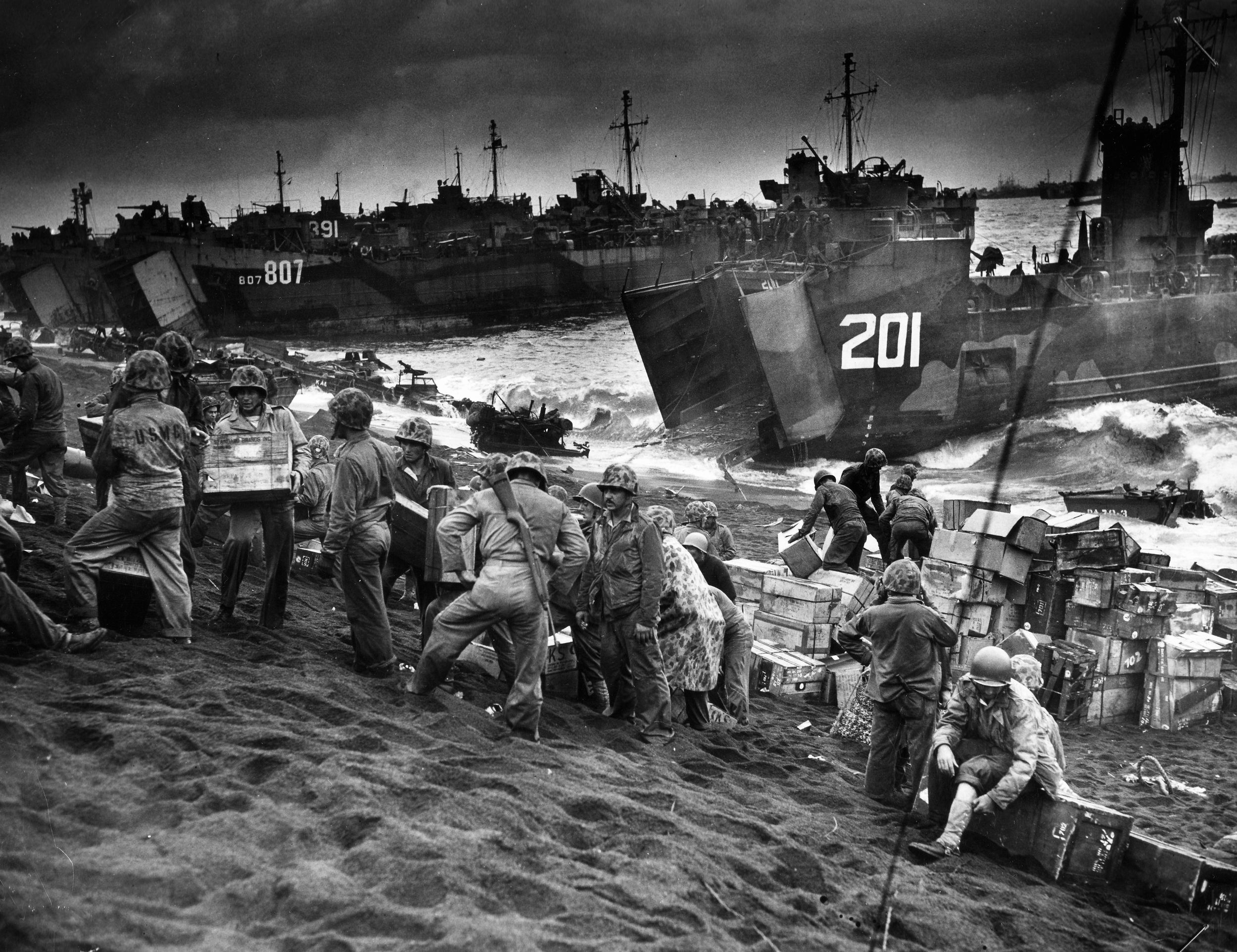
With dusk the ship received orders to move offshore for the night. Soon hundreds of ships lying at anchor around Iwo Jima were vanishing into darkness without as much as a cigarette’s glow visible across the vast horizon. Behind them the beach was ablaze with dotted strings of machine-gun tracers, bright flashes of mortar and artillery explosions, and the constant twinkling of muzzle flashes. With the ship on full alert and the spectacle of the raging land battle, no one on board got much sleep.
The next morning, as soon as it was light, the battleships resumed shelling Mount Suribachi, and aircraft returned in great numbers. They began dropping their bombs on the flat expanse of the island to the east of Mount Suribachi near the Japanese airfields. The thunder of exploding bombs was continuous. Like green slugs, a few tanks started moving inland. One tank pivoted, lowered its gun, and fired a 75mm shell into a bunker. Shielded by tanks against Japanese rifle and machine-gun fire, the Marines inched ahead. They held their weapons like hunters ready for the flush.
At his battle station in a 40mm gun position, Caiazzo knew the Japanese were getting what they deserved but took no pleasure in death. Then an antitank rocket made a whooshing roar and hit a tank that was enveloped in a fireball. Ammunition began exploding in the fire. The tanks stopped in place and pivoted in search of the new threat. Then one of the tanks fired into what appeared to be a bunker. In a few minutes the tanks moved forward with the Marine infantry close behind. Caiazzo suspected that if the crew had known they would end up at Iwo Jima, they might have thought twice about joining the Coast Guard.
The Wounded on Iwo Jima
Lieutenant (j.g.) John Waite had not seen the ships shelling Suribachi, the aircraft being shot down, or the Marines fighting on the beach. As the engineering officer, he rarely left the swelter and roar of the engine room. Waite knew he was responsible for the safety of the ship and the life of every man on board. He controlled the engines that determined the ship’s direction and speed. Any delay when the bridge called for power could jeopardize the safety of LST 792. Although they had been together only a few months, Waite had total confidence in his men. They were the best engine room crew in the entire Coast Guard for the simple reason that he had never given them an opportunity to be otherwise. While he was giving the port engine a going over, one of his machinist mates slid down the ladder to the engine room and yelled the latest news in his ear. There were so many wounded Marines that the hospital ship could not take them all. Waite registered surprise. It was hard to believe that the invasion had turned into a slugfest after the planners had predicted that the Japanese on Iwo Jima would quickly throw in the towel.
It was now D-day plus three, and the situation on Iwo Jima seemed to remain unclear. The situation was too serious for normal complaining. The ship was overcrowded. Even with the long lines for chow and the makeshift heads on the fantail, everyone aboard knew that compared to the Marines ashore they had it soft.
Around 10 am, Pennock made his rounds and saw that Caiazzo’s helmet was tilted forward covering his eyes. He was standing dutifully next to his 40mm gun, but he was asleep. Pennock knew that Caiazzo had spent the previous night in a landing craft ferrying ammunition to the Marines on the beach. Every minute had been a white-knuckle affair. With their landing craft blacked out, it was a miracle they had not hit something. With tons of ammunition aboard, a collision would have been disastrous. Caiazzo was grateful not only for the shut-eye he was getting; after the previous night he was grateful to be alive. Pennock decided to let Caiazzo sleep on. If anyone complained about the sailor sleeping, Pennock would remind them he was responsible for all deck activity.
Hearing explosions, Pennock turned to see mortar rounds exploding near an LST that was offloading equipment on the beach. Then the ship was hit repeatedly and debris flew everywhere. He watched courageous sailors rescuing the wounded and loading them into a landing craft. In a few minutes, the landing craft was alongside LST 792, and the coxswain yelled to see if there were medical facilities on board. Pennock shook his head and pointed toward a white ship with a large red cross painted on the side. The coxswain gunned the engine, and the landing craft headed for the open sea and the hospital ship. Pennock could see about 15 wounded aboard; one sailor, completely covered by a blanket, was obviously dead.
Beaching LST 792
Finally, on the morning of D-day plus four, LST 792 received orders to beach. Everyone grabbed their gear and went to their beaching stations as the ship shuddered under full power and made a sharp turn that ended with her perfectly aimed at Red Beach 2, just to the east of Mount Suribachi. Everyone aboard knew they were in for it, but now that the dice had been rolled there was a collective feeling of relief.
Just a few hundred yards out, any optimism evaporated. Red Beach 2 was being blasted by mortar and artillery fire. LST 792 reversed course and returned to deep water. A repair ship had its aft cabin shot to pieces and was retreating with clouds of oily black smoke billowing behind it as sailors fought the fire.
Suddenly, everyone was cheering, and all the ships were blowing their horns and sirens. On top of Mount Suribachi an American flag was visible against the pale blue sky. Everyone aboard the LST continued cheering until they heard explosions and saw Marines with a flamethrower shooting fire into a cave just a few hundred feet down the mountain from the flag. A destroyer passing close to the island abruptly slowed and fired its forward guns into another cave. This caused a much louder explosion as a cache of Japanese ammunition exploded. While the flag raising was a welcome diversion, it was obvious that it did not signify victory.
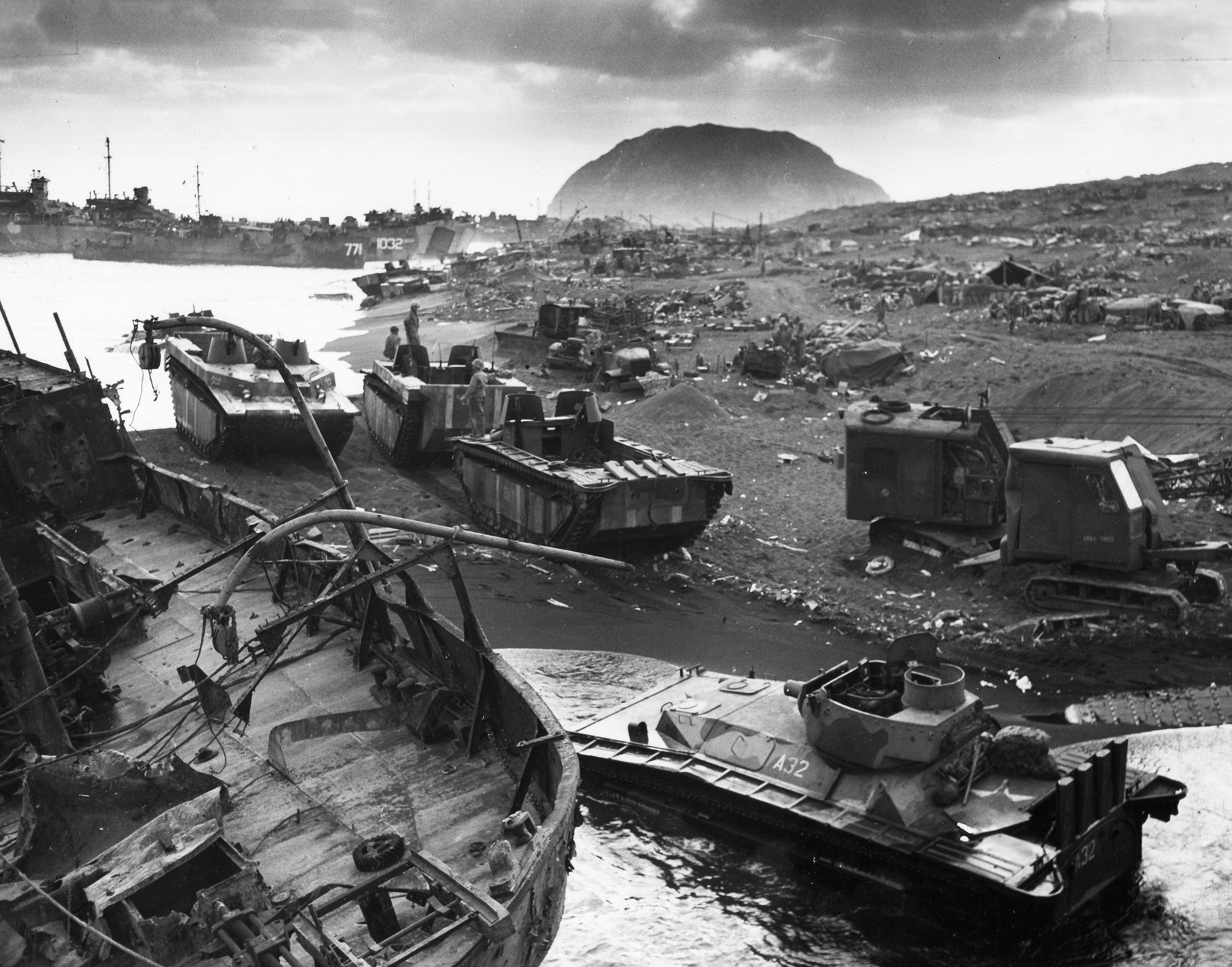
Just before dark, the loudspeaker aboard LST 792 ordered everyone to their beaching stations, and the ship headed in. The captain personally told Lieutenant Waite to pump out all the ballast tanks. Waite thought he was kidding, but the captain said that the Navy wanted them to beach as high as possible to keep the vehicles from bogging down at water’s edge. Waite responded that beaching without ballast was contrary to procedures and was inviting disaster.
“With no ballast to pump out, we’ll be stuck on the beach until we offload the entire cargo,” he told the captain. “We’ll be a sitting duck for hours.”
The captain, however, told him to follow orders.
Waite was short on military experience but had enough training to know that no one was expected to follow orders that could get people killed or compromise the mission. So, he pumped out all the ballast tanks except the largest one. If he got court martialed, he would simply state that with all the excitement he forgot to pump out one of the tanks.
Chaos at Red Beach 2
With the afternoon sun already low in the sky, LST 792 was once again aimed at Red Beach 2 and moved in smartly. All the embarking troops belowdecks were in full combat gear, and on the main deck all hands had taken cover in a gun tub or behind a piece of heavy equipment. With its front doors swung open, LST 792 lurched to a full stop with its nose high on the beach. Inching slowly down the ramp, first a bulldozer and then a dump truck drove into the night that was almost as black as the volcanic sand.
A Japanese mortar round hit no more than 30 yards away from LST 792. A second was closer. A third struck the main deck and sent shell fragments in every direction. More mortar rounds followed in rapid succession. Then, with an explosion far more powerful than the mortars, an artillery shell ripped through the steel hull and exploded inside of the ship, making the trucks and other cargo on the main deck jump like beans on a snare drum.
Immediately following the artillery explosion, more mortar shells started hitting on the main deck. Crates were blown away, and there was blood spattered everywhere. Caiazzo was down, his leg numb and his face so soaked in blood that he could see only enough to know that he was not blind. Using his arms and good leg, he got to his feet. Nearby was a bloodied sailor lying on the deck. Caiazzo lifted him to his feet and helped him aft to the ship’s pharmacist mate who was already triaging patients. Caiazzo put the wounded sailor down and turned to go back to his duty station, but the pharmacist mate told him to stay put until he could see how bad the damage was to Caiazzo’s face.
LST 792 had to get off the beach fast, and Pennock knew that the captain would not budge without orders, which might never come. Pennock knew that leaving the beach to save the radar equipment would be viewed as brilliant leadership rather than disobedience. Seconds after sending that message to the captain, Pennock felt the engines rev, but the ship just groaned like a trapped animal.
What neither the captain nor Pennock knew was that the instant the ship hit the beach Waite used every available system to empty the large ballast tank he had “forgotten” after the captain ordered him to pump all the tanks dry. The ship was still stuck fast; Pennock signaled the engine room and told Waite to “give me everything you’ve got, now!”
The noise from the engines rose in pitch, and LST 792 shook so violently that Pennock thought the welds might bust loose and the steel plates buckle. Then, the ship lurched, made a loud scraping sound, and was moving back 20 yards, 30 yards. Suddenly, there was an explosion so powerful that the bow of the ship seemed to buck like it had been tossed by a wave. A bomb dropped by a Japanese plane hit where LST 792 had been only seconds earlier.
Pennock zigzagged through the maze of equipment on deck, looking for stricken sailors. He had not gone far when he saw something shiny on the deck. It was gasoline! Then he smelled it; the air was saturated with gas fumes. The mortars had blown holes in the 55-gallon drums lashed to the deck. Pennock freed the 300-pound drums and started throwing them over the side. One of the men in his deck crew joined him, and together, slipping in the gasoline, they jettisoned the drums with astounding speed. Amazingly, there was no fire. Totally soaked in gasoline, Pennock took a breath and knew that he and his ship had been incredibly lucky, far luckier than any crew could possibly expect to be. A single spark would have turned LST 792 into a fireball.
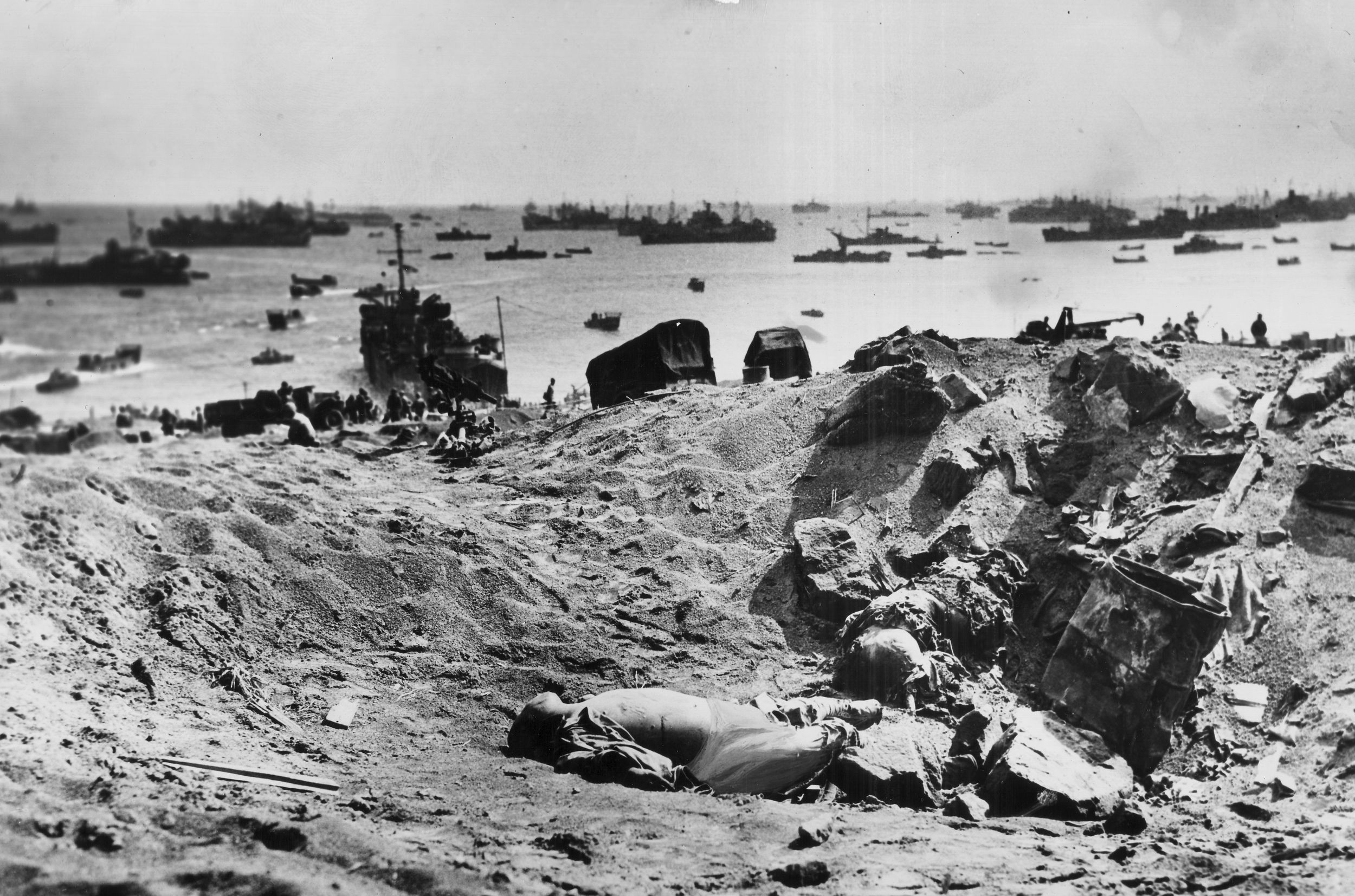
Finishing the Job
LST 792 anchored a mile off shore. Through the night, the wounded were cared for, and damage control parties made repairs and confirmed that the ship was seaworthy. The next morning, the ship received orders to beach, and within a few hours the remaining soldiers and equipment were ashore on Red Beach 2.
With the Japanese now pushed back several hundred yards, the beach was transformed into a booming rear-echelon area. LSTs and landing craft were parked gunwale to gunwale with their bows high and dry, disgorging their cargoes of trucks, construction equipment, tanks, and men onto the beach. As soon as one vessel was empty, it would be shooed away by the beach master to make room for another. Like armies of ants, Marines using bucket-brigade lines conveyed stockpiles of ammunition and supplies from LSTs and landing craft to a burgeoning array of storage dumps.
By noon, the members of LST 792’s crew who were not cargo handlers had grown restless. The desire to feel solid ground underfoot and the promise of souvenirs were irresistible. In their khaki uniforms, with neither helmets nor other combat gear, Pennock and Waite walked down the ramp, away from the safety of their ship, and over the black-sand ridge that had stopped so many Marines on D-day.
Immediately they encountered the bunkers and machine-gun nests that had been responsible for killing so many Marines. Now, hanging out of gun ports and windows, the Japanese defenders no longer looked human. They had been turned into inorganic charcoal objects. The corpses that had not been scorched lay in grotesque poses, drying in the sun. Their skin already brown and tight, they looked like ancient mummies in glass-cased museum displays. On Iwo Jima, the stench of rotting flesh and the smoldering rubber from burning equipment numbed the senses and clogged the brain. Waite had to force himself to keep moving. Here, the Japanese were fighting, not to win or to even die heroically, but to convince America that invading Japan would not be worth the enormous cost in American lives.
Men from LST 792 stooped over like beachcombers picking through debris for pistols, helmets, swords, and personal items. Wisely, they avoided anything the U.S. Navy’s explosive ordnance disposal teams had marked with small flags as possibly being booby-trapped.
More than the sound of a rifle shot, it was the spank of a bullet hitting the sand at their feet and the warning of a Japanese sniper lurking nearby that sent Pennock and Waite running for their ship. Their sprint for safety was interrupted by Japanese mortars. Finding safety under a wrecked truck, they waited for an eternally long few seconds, then the shells exploded in the sand not 50 yards away. Marines who looked like they had been in combat for months cursed the Coast Guardsmen for drawing fire and interrupting their few minutes of downtime.
Plowing through knee-deep sand, Waite started down the embankment near the beach and nearly stumbled over a dead Marine whose face was half buried in the coarse black sand. This time, Waite could not look away. Waite focused on the Marine’s fingers lying limp on the sand. Waite’s stomach tightened, and, even though the Marine was in his gaze for a few seconds, he knew that the image would never fade, no matter how long he lived.
Two Battle Stars For LST 792
By the middle of the afternoon, LST 792 had offloaded its cargo and pulled back about a mile offshore where it would lie at anchor awaiting orders to join a convoy. During the afternoon of D-day plus six, perhaps to show that they were still up to the challenge, Japanese artillerymen fired their weapon. Without the gunner’s normal need to bracket, make corrections, and then fire subsequent rounds, the first shell hit LST 792. The 5-inch shell blew a large hole in the port side a few feet above the waterline. Fortunately, the damaged space had been unoccupied.
On D-day plus nine, LST 792 joined a convoy returning to Saipan where, rumor had it, the ship was to be found beyond repair and would be scrapped. The rumor proved to be false. With the invasion of Okinawa just over the horizon and LSTs in short supply, the ship was patched up and headed west.
By the time LST 792 had completed her tour, she would earn two battle stars and shoot down several Japanese planes although she got official credit for only one. Almost a third of her crew had been wounded. On the final leg of her journey home from the war, the ship needed a tow into the harbor at San Diego, California.
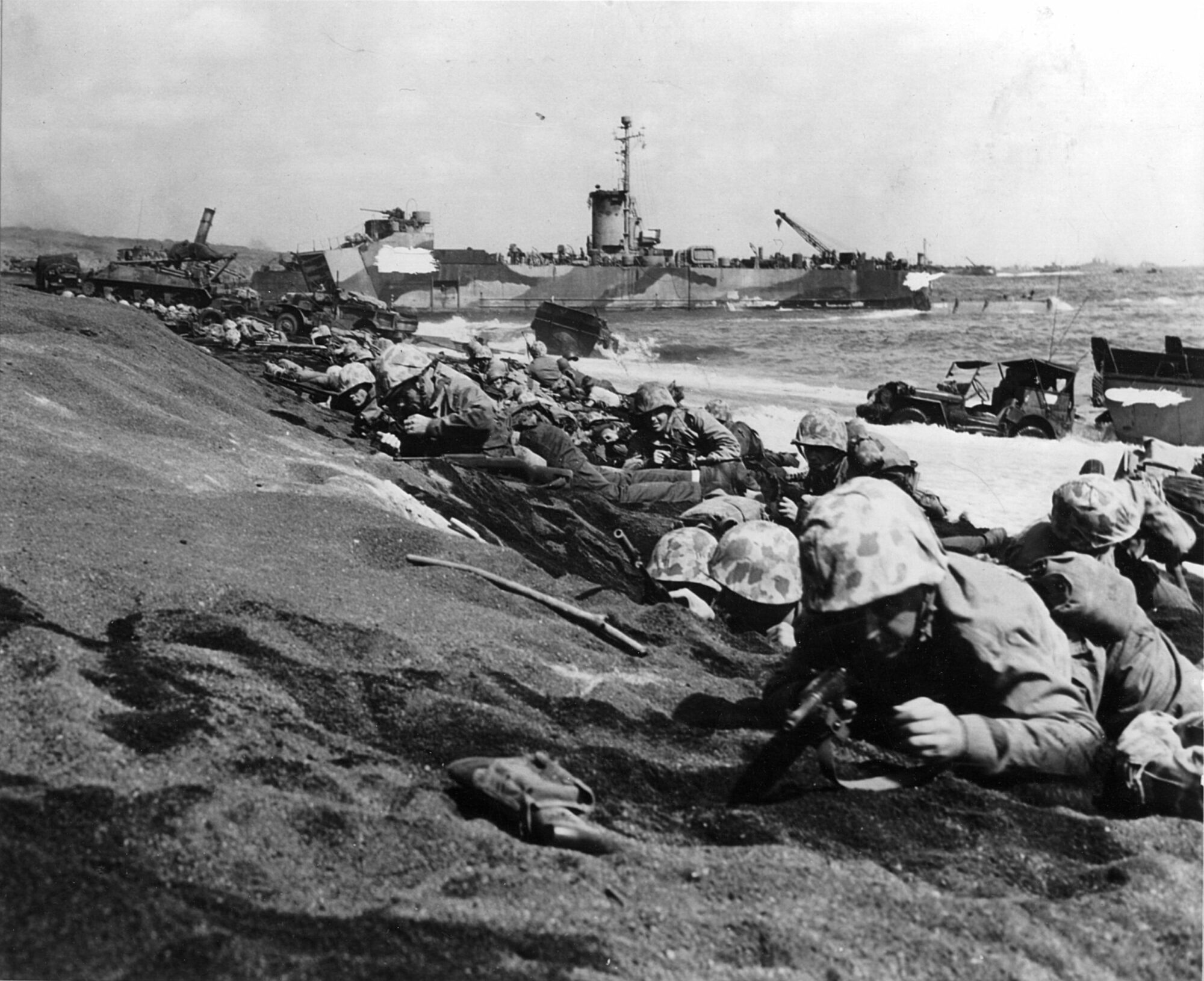
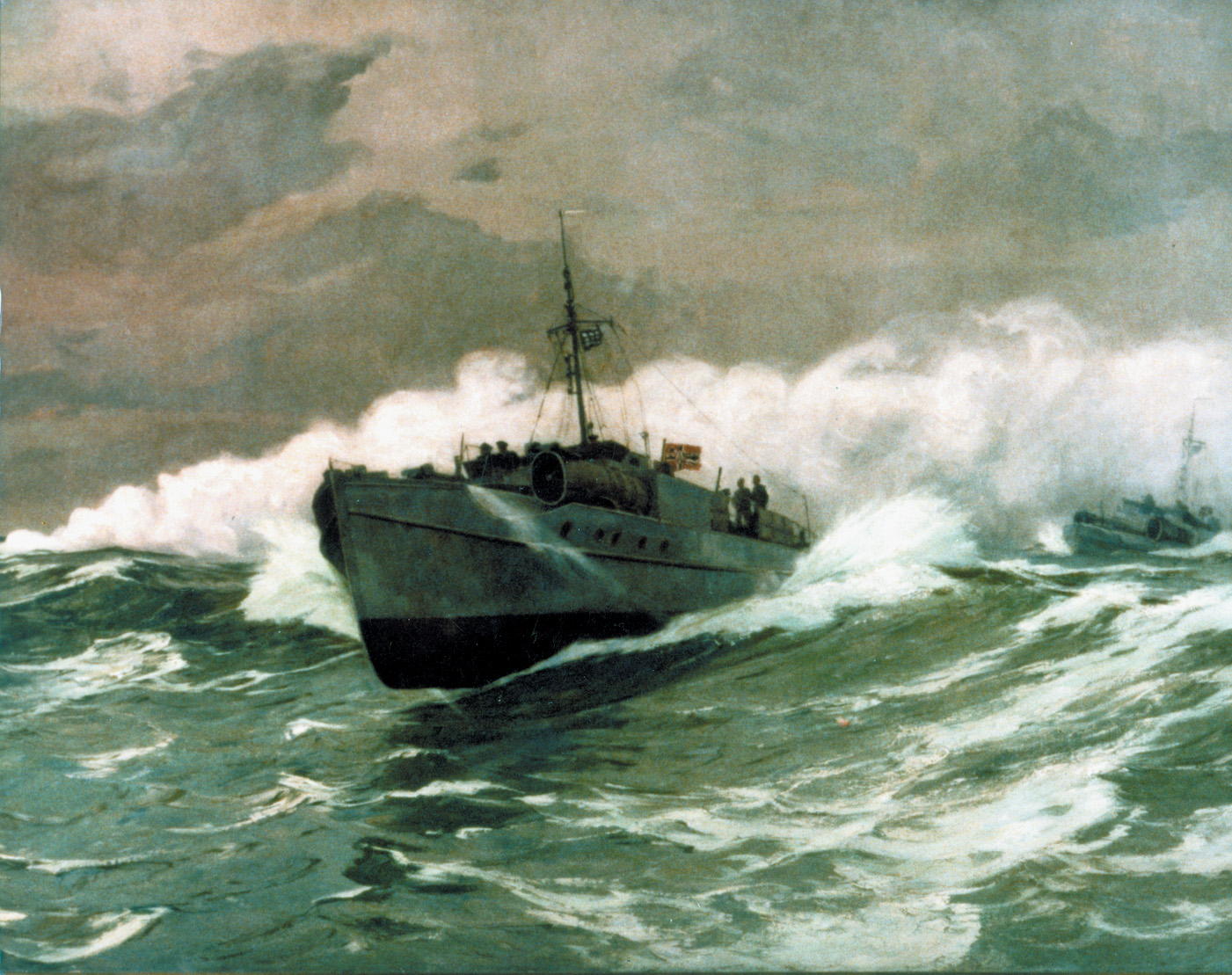
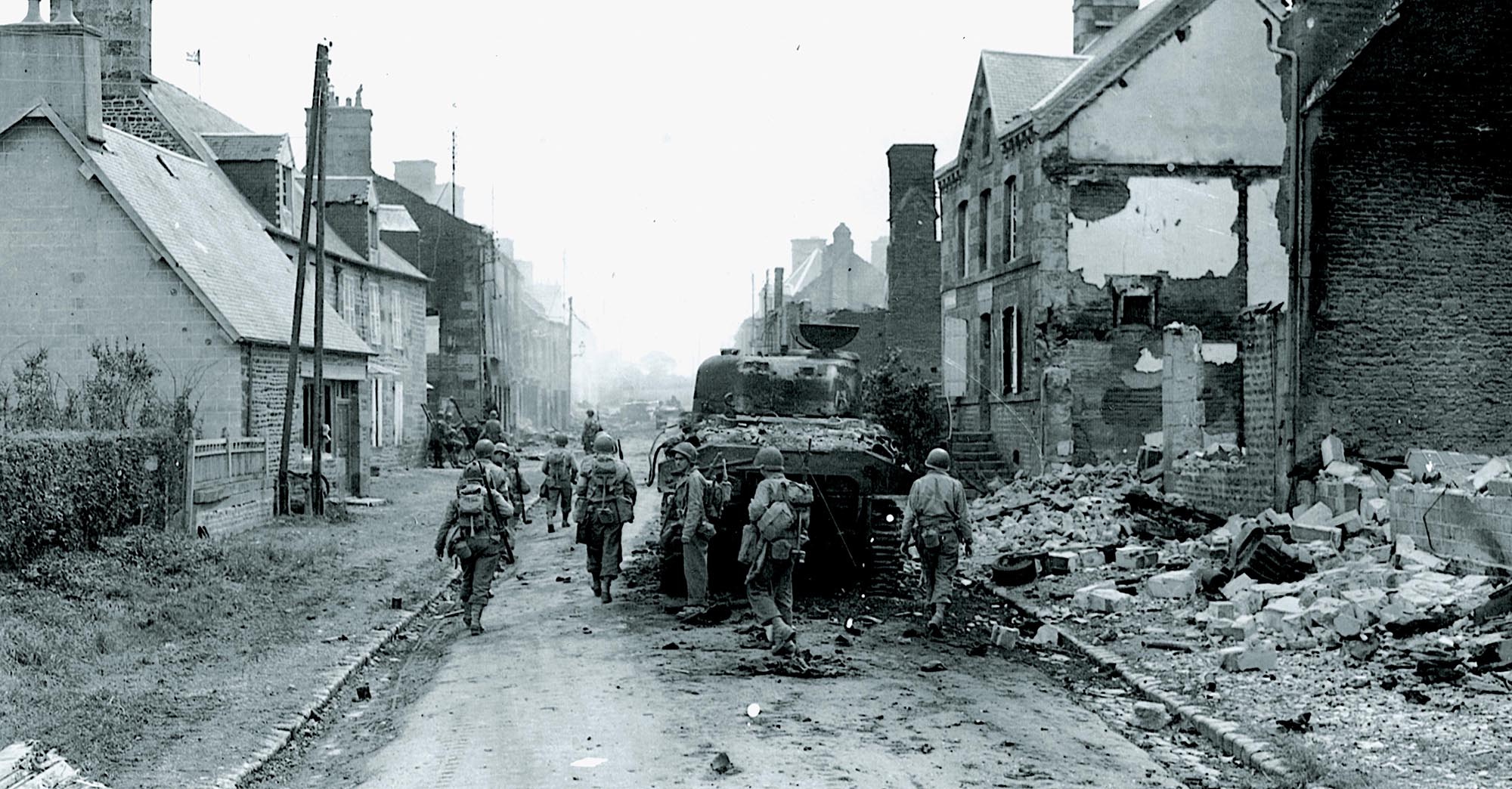
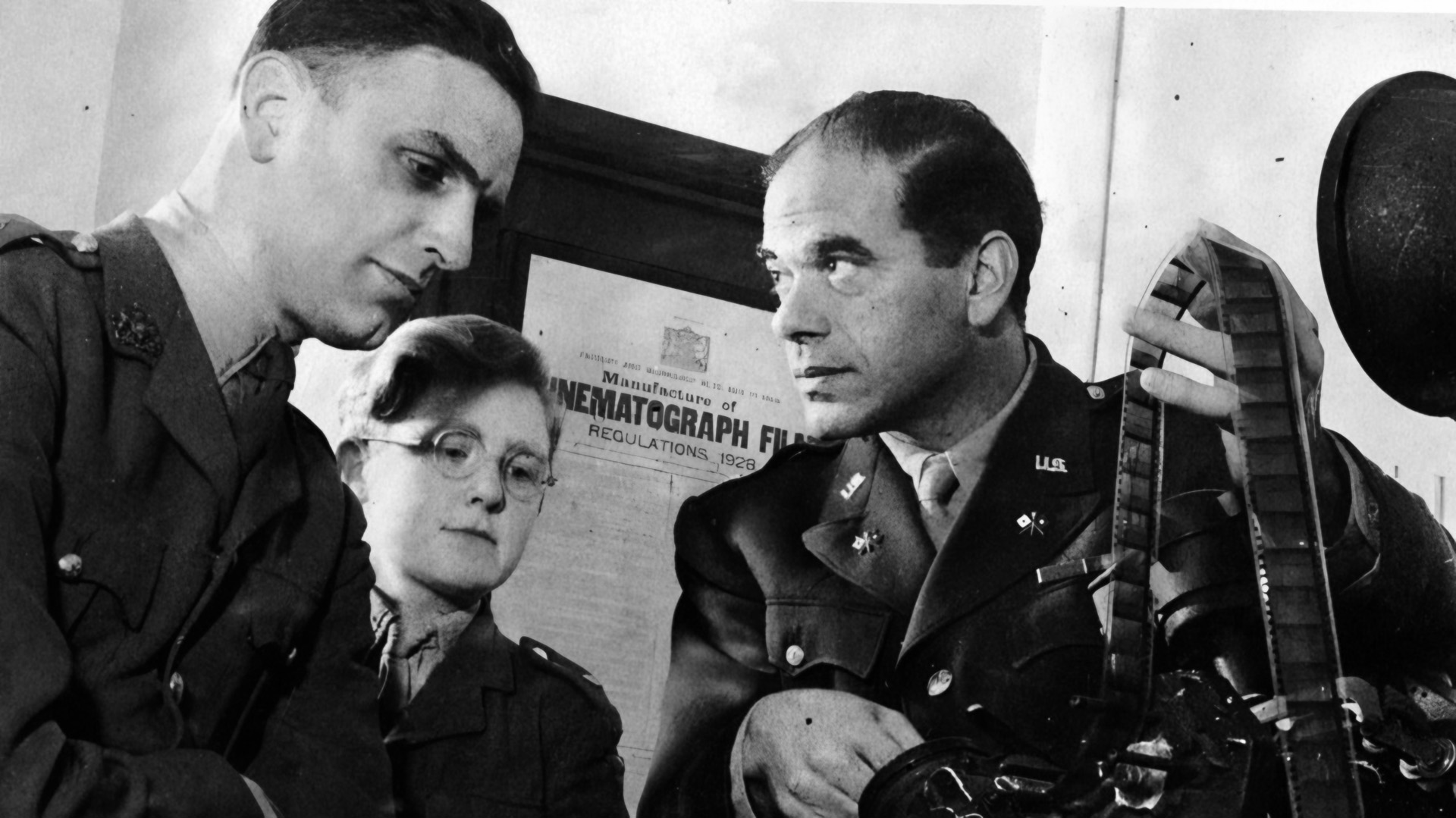
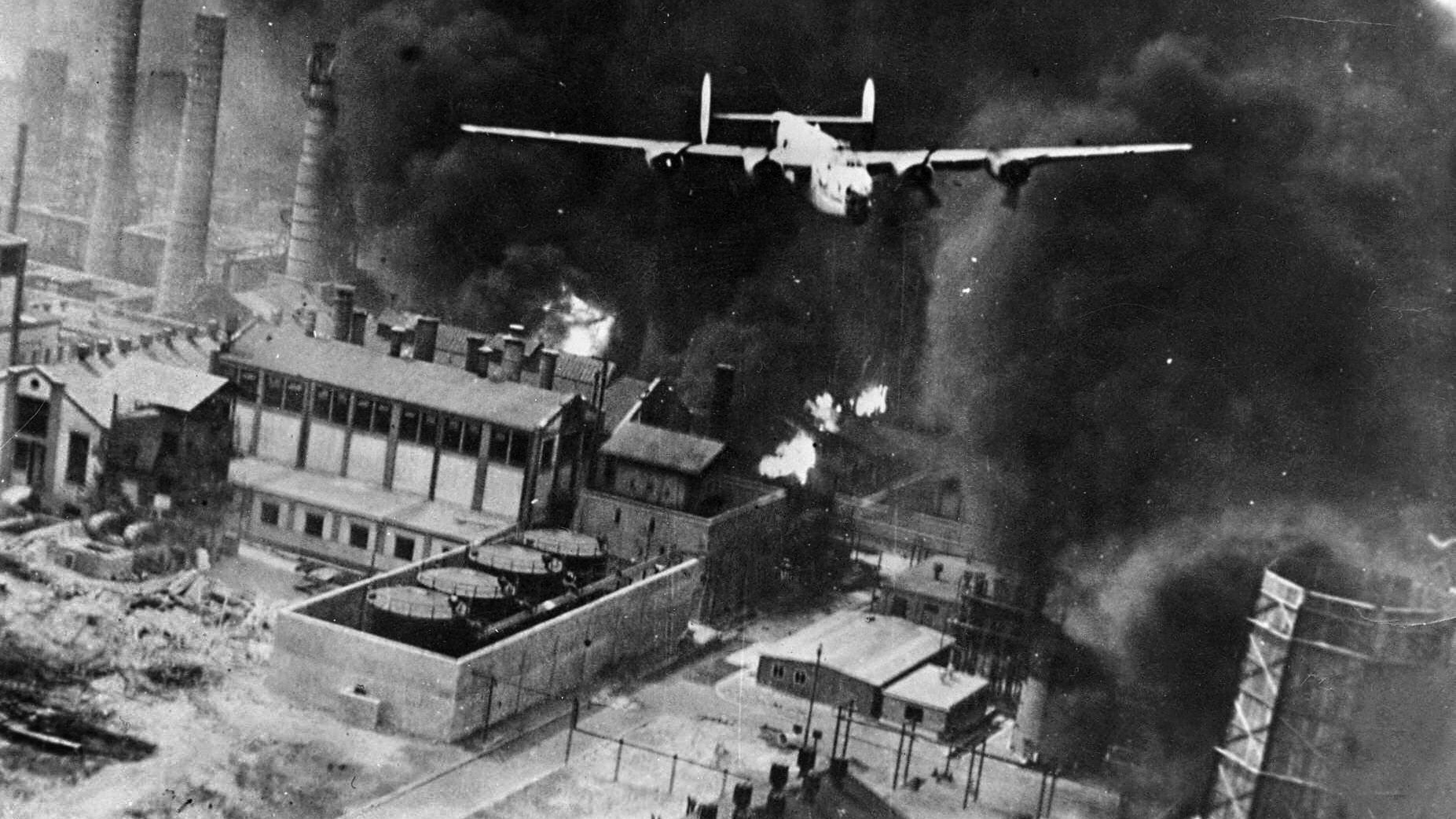
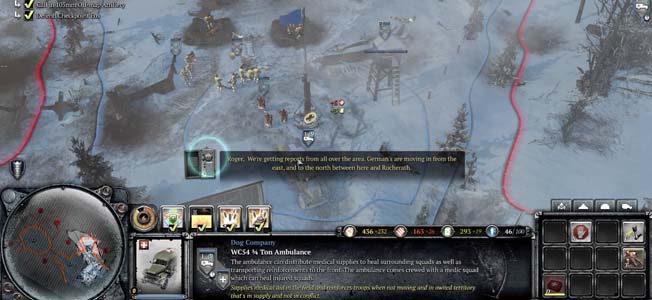
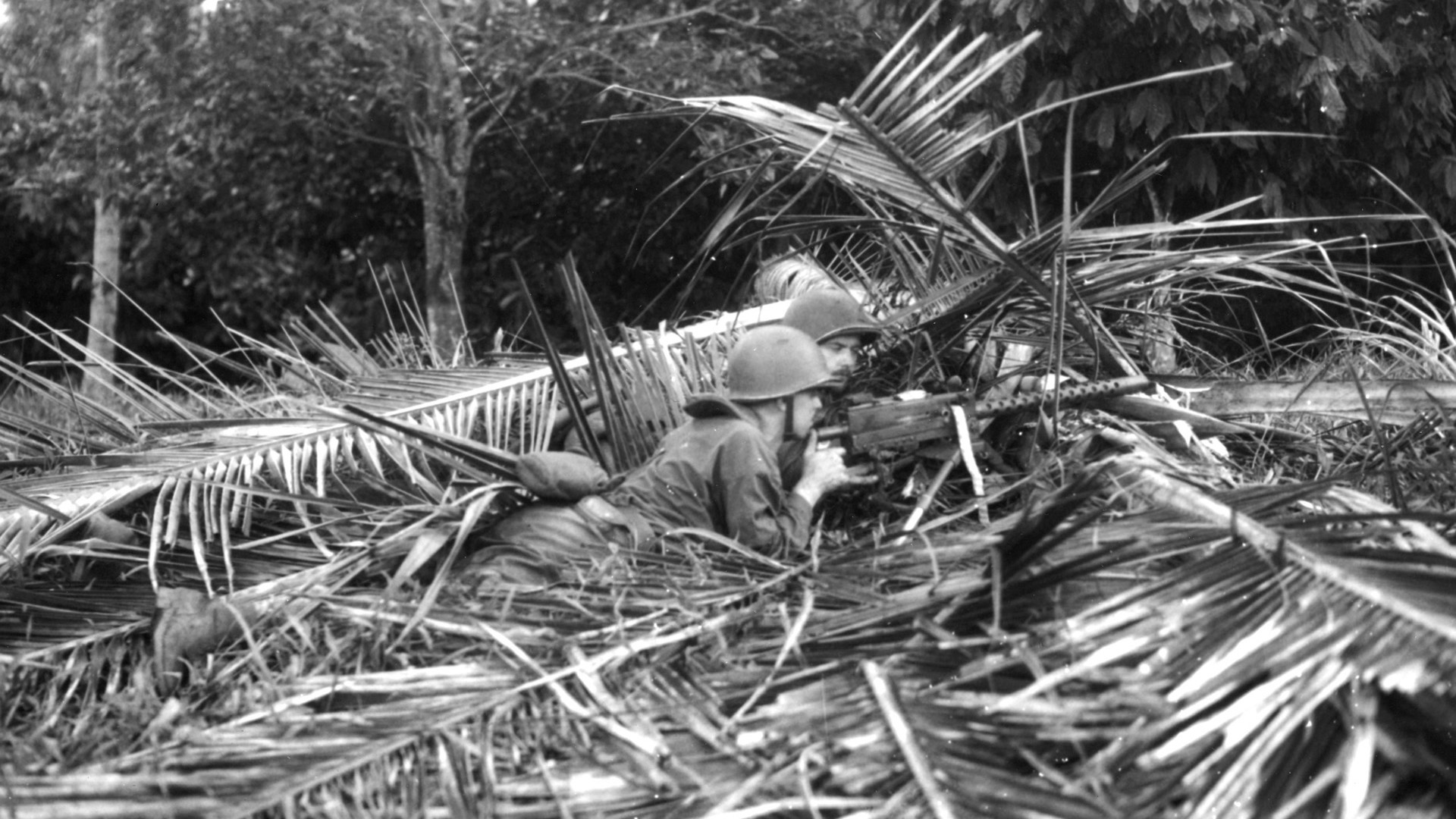
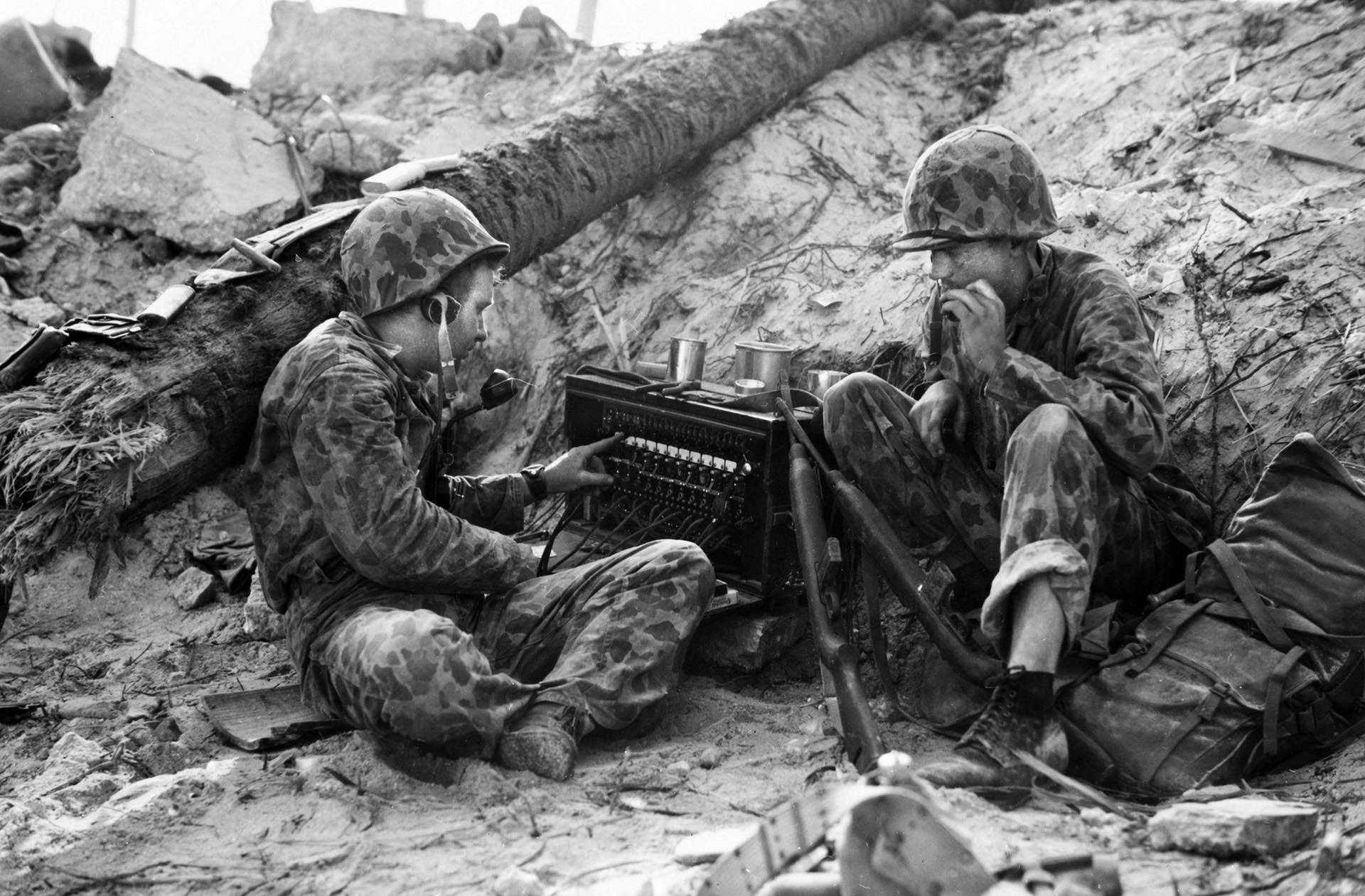
My Dad was on the LST 792 from her launching to her decommissioning.
This story matches word for word his stories of the Battle Of Iwo Jima.
Is there a chronicle of the LST 792 at Okinawa?
Dad stayed in the US Coast Guard, was in the first group of Master Chiefs, and, retired after 22 years of service.
Thanks be to God for all service personnel who served!
Jim Goodwin
Just came across this ones as I was at the Marine Corps Museum and noticed the Coast Guard who died on Iwo Jima.
Semper Fi / Semper Paratus